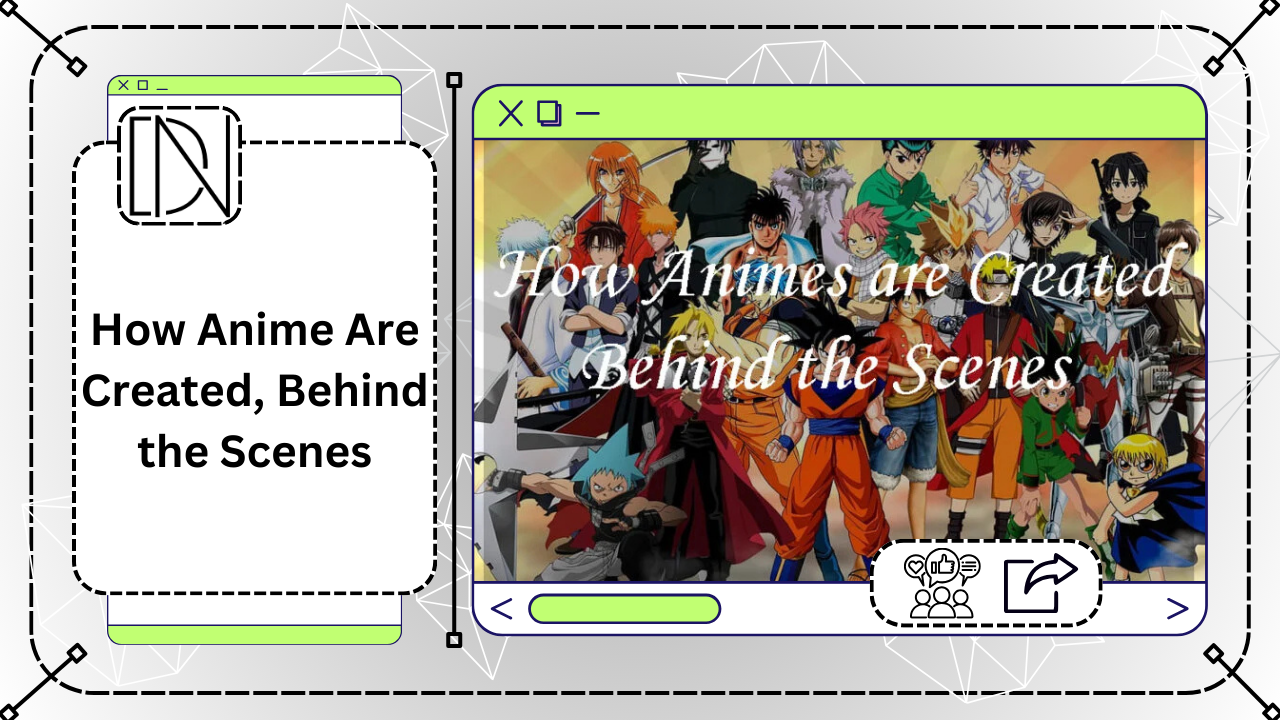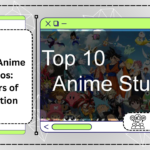Anime has enthralled audiences across the globe with its unique blend of captivating storytelling, colorful characters, and imaginative visuals. Whether it’s action-packed series like Naruto or emotionally charged dramas like Your Name, anime’s ability to resonate with viewers comes from a combination of artistic talent and technical expertise. But have you ever wondered what goes on behind the scenes in creating these masterful works?
Anime production is a highly intricate, multi-step process that involves the collaboration of various skilled professionals—from artists to voice actors to animators. This article will take you behind the scenes to explore how anime is created, from initial concept development to its final release.
1. Concept and Planning: Laying the Foundation
The creation of anime begins with an idea. This could be an adaptation of a popular manga, light novel, or an original concept developed by a team of producers and creators. The initial planning stage is crucial, as it sets the foundation for the entire production. The creators and producers brainstorm to develop a compelling storyline, characters, and themes that will resonate with the target audience.
Some anime are adaptations of well-established source material, while others are entirely original creations. Regardless of origin, market research and audience analysis often guide producers in determining the genre, tone, and target demographic. This planning phase typically involves:
- Story development: Outlining key plot points, setting, and character arcs.
- Budget and scheduling: Determining the financial and time constraints, as anime can take months or even years to complete.
- Studio selection: Deciding which animation studio will handle production, such as famous names like Toei Animation or Studio Ghibli.
2. Scriptwriting: Crafting the Dialogue and Story
Once the initial concept is solidified, the scriptwriting phase begins. Professional writers draft the dialogue, scene descriptions, and narrative flow that will ultimately guide the animators, directors, and voice actors.
In many cases, the script is developed through a series of story meetings, where writers collaborate with directors and producers to refine the narrative structure. In adaptations, the scriptwriters stay faithful to the source material while making necessary adjustments for pacing or clarity.
A well-written script forms the backbone of the entire anime production, as it determines:
- Character interactions: How the characters express themselves and develop over time.
- Plot progression: Ensuring that the story remains engaging and coherent throughout the series or film.
- Tone and style: Whether the anime will be comedic, dramatic, or action-packed, the script sets the tone.
3. Storyboarding: Visualizing the Scenes
The next crucial step in the production pipeline is storyboarding. Storyboards are like the blueprint for the anime, providing a visual representation of how each scene will unfold. The storyboard artist draws detailed sketches that capture the shot composition, camera angles, character positions, and overall action.
The storyboard phase is highly collaborative, involving input from directors, writers, and animators to ensure that each shot aligns with the creator’s vision. Storyboards serve as a guide for animators during the actual production, helping to maintain the visual consistency and flow of the narrative.
Here’s what storyboards typically include:
- Visual composition: What will appear in each frame, including characters, objects, and backgrounds.
- Camera direction: Indications of zooms, pans, cuts, and transitions between scenes.
- Timing: The pacing of the action and movement within each scene.
4. Character Design: Bringing Characters to Life
Once the storyboards are complete, the character designers step in to bring the characters to life. These artists create character models that define each character’s appearance, including their facial expressions, clothing, body type, and distinct features.
Character design is not just about making a character look good—it’s about creating a visual representation that aligns with the character’s personality, backstory, and role within the anime. Designers often produce character sheets, which are reference guides used throughout the production to ensure that each character remains visually consistent in every scene.
Key elements of character design:
- Silhouette: A distinct shape that makes the character recognizable even from a distance.
- Color scheme: Colors that represent the character’s personality or mood.
- Facial expressions: Range of emotions to capture various moods, from anger to joy.
5. Animation: The Heart of Anime Production
The animation process is the heart and soul of anime creation. Traditionally, anime has been produced using hand-drawn animation, where animators create individual frames by hand. While many studios still use traditional methods, modern techniques often incorporate digital animation to enhance efficiency and accuracy.
In anime, there are typically two types of animation:
- Key Animation: Senior animators create key frames that define the most important moments in each scene, such as character movements, fights, or emotional reactions.
- In-between Animation: Junior animators fill in the frames between key moments to ensure smooth motion.
Anime often employs a technique called “limited animation,” where fewer frames are used to cut production time without sacrificing quality. This technique, combined with creative direction, helps produce dynamic and visually engaging scenes on a budget.
6. Voice Acting (Seiyuu): Giving Characters a Voice
In Japan, voice acting is a celebrated art form, and the seiyuu (voice actors) are often just as famous as the characters they portray. The voice acting process typically begins once the rough animation is complete, allowing the seiyuu to match their lines with the character’s movements.
Voice actors bring the characters to life by infusing them with distinct personalities, emotions, and vocal tones. This process is highly detailed, with voice directors ensuring that each line matches the emotional tone and timing of the scene.
Key aspects of voice acting:
- Casting: Choosing the right seiyuu for the role is crucial for ensuring the character’s personality shines through.
- Emotion: Voice actors must convey a range of emotions, from joy to sorrow to anger, with just their voices.
- Synchronization: Ensuring that the voice matches the animated movements of the character’s mouth.
7. Music and Sound Effects: Enhancing the Atmosphere
Music plays a crucial role in creating the emotional atmosphere of an anime. Composers are brought in to create original scores that match the tone and mood of the scenes. Whether it’s an uplifting theme during a victory scene or somber music during a tearful goodbye, the soundtrack elevates the storytelling.
In addition to the musical score, sound engineers work to create sound effects that add realism to the scenes. From the clash of swords to the sound of footsteps, every sound is carefully chosen to enhance the viewer’s experience.
8. Editing and Quality Control: Refining the Final Product
Once the animation, voice acting, and sound are completed, the editing process begins. Editors are responsible for ensuring that the pacing, transitions, and timing of the scenes are perfect. They combine all the elements—animation, voice acting, music, and sound effects—into a cohesive final product.
In addition, quality control teams meticulously review the entire episode or film to spot any inconsistencies, errors, or animation flaws. Any necessary adjustments are made before the anime is finalized for distribution.
9. Distribution and Marketing: Bringing Anime to the World
Once the anime is complete, it’s time to share it with the world. Distribution teams work to get the anime onto streaming platforms, TV networks, and theaters. Simultaneously, marketing teams launch campaigns to generate excitement and anticipation, whether through trailers, posters, or social media engagement.
Conclusion: The Magic Behind Anime
The making of anime is a complex, collaborative process that brings together a wide range of talents—writers, animators, voice actors, composers, and more. From concept development to the final release, every step is essential in creating the anime we know and love. So, the next time you watch your favorite show, take a moment to appreciate the meticulous craftsmanship and dedication that goes into bringing those characters and stories to life.
For more like this read our blog on Top 10 Anime Studios: Masters of Animation












